Literary analysis essay topics focus on studying themes, characters, writing techniques, and stylistic choices in texts to uncover their deeper meanings. They span genres and works, from classic novels and short stories to poems and thought-provoking plays. Literary analysis topics induce you to research how different authors use language and symbolism to convey complex ideas and evoke emotions.
If you’re struggling to come up with compelling literary essay topics, ourCustom Writing team is here to help. In this article, you’ll find:
- A list of the best literary analysis ideas across different genres and time periods
- Helpful writing prompts to spark your creativity
- A writing guide with practical tips to help you develop your chosen book essay topic
- A model example of a well-crafted literary analysis paper
With such a diverse selection of literature essay topics to examine, you’ll definitely find the ideal one to get started!
- 🔝 Top 10 Literature Topics for High School
- 🔮 Top 10 Literary Topics for College
- 📜 Topics from Different Eras
- 🖋️ Poetry Analysis Topics
- 🎭 Shakespeare Essay Topics
- 📚 English Literature Topics: Different Authors
- 💡 Non-Fiction Literature Topics
- ⭐ Other Ideas
- 🖊️ Literary Analysis Prompts
- ✍️ Writing Guide
- 📃 Essay Example
- ❓ FAQs
- 🔗 References
🔝 Top 10 Literature Essay Topics for High School
- The role of religion in King Lear
- Milk symbolism in Beloved
- Is there gender inequality in Iliad?
- Social issues of The Little Match Girl
- Gender roles in The Great Gatsby
- Frankenstein: historical background
- How is loyalty presented in Beowulf?
- Flower symbolism in A Rose for Emily
- Politics in Titus Andronicus
- The presentation of power in Ozymandias
🔮 Top 10 Literary Analysis Essay Topics for College
- Nature symbolism in Young Goodman Brown
- Childhood trauma in God Help the Child
- The consequences of Macbeth’s ambition
- The historical context of The Scarlet Letter
- Presentation of misery in The Chimney Sweeper
- The supernatural in The Fall of the House of Usher
- What does Dorian Gray’s portrait represent?
- How is the true inner self discovered in Demian?
- Natural beauty in I Wandered Lonely as a Cloud
- Endurance as a theme of The Old Man and the Sea
📜 Literary Analysis Essay Topics: Different Eras
Topics in Ancient Greek & Roman Literature
Works of literature from Ancient Greece have a timeless quality. This is why they are still taught in schools centuries later. After thousands of years, there is little that hasn’t already been written about these works. That’s why we’ve gathered the only most outstanding topics that you will definitely find interesting:
- Justice in Plato’s The Republic. Plato is perhaps the most influential thinker in the Western World. Accordingly, writing about his powerful philosophical dialogs is a challenging task. Most teachers will assign only portions of The Republic. We suggest you write about the theme of justice, but you can choose to focus on any other aspect of the dialog.
- Determination in Sophocles’ Antigone. Antigone is one of the masterworks of the Greek playwright Sophocles. In this tale of royal succession, key themes include civil disobedience, natural and human law, and faithfulness.
- Odysseus as an atypical hero in The Odyssey. The Odyssey by Homer is considered one of the most important poems in Classic literature. Odysseus is a unique epic hero facing an unusual challenge: his goal is not to win battles but to reconnect with his family. He has to rely on his wit rather than sheer power to achieve it. In your essay, explain how Odysseus differs from other heroes in Greek mythology.
- Ethical principles in Aesop’s Fables. Aesop’s Fables represent a unique example of Ancient Greek literature. The stories written by a slave have become a cultural phenomenon centuries later. Even today, the morals of his works stay relevant.
- The influence of Greek tragedy on modern theater. Sophocles’ and Aeschylus’ plays can still be found in the repertoire of many theaters. Moreover, their works often serve as inspiration for contemporary playwrights.
- The tragedy of Oedipus in Sophocles’ Oedipus Rex. Oedipus is one of the best-known classic tragic heroes. In killing his father and marrying his mother, he fulfilled the prophecy of the Oracle. Through this play, Sophocles explores the themes of destiny and human flaws.
- The variety of genres in the Metamorphoses. Millennia after Ovid’s Metamorphoses were written, scholars still argue about the genre of this work. Ovid blended historical events with fiction and experimented with the tone and themes of the poem.
- The role of gods in Homer’s epic poems. In Homer’s Iliad and The Odyssey, gods often determine the outcomes of paramount events and change heroes’ destinies. They can become powerful allies or dangerous foes of humans. Explore how divine interventions change the course of the story in both epic poems. Focus on Athene, Apollo, Aphrodite, Hera, and Poseidon.
- Cicero’s legacy in Western politics and philosophy. Cicero’s letters are widely recognized as some of the most significant works of Latin literature. John Locke, Voltaire, and Martin Luther are among the figures inspired by him. Cicero’s philosophy teaching also impacted revolutionary movements in France and America in the 17th century.
Literary Essay Topics: 19th and 20th Century
Many great literary works in the English language were created in the golden era of the 19th and 20th centuries. These works, ranging from epic novels to short poems, shed light on the themes that define the Anglophone world’s spirit.
- The conflict between good and evil in The Adventures of Sherlock Holmes. Sherlock Holmes—a character created by Sir Arthur Conan Doyle—is deemed the most renowned fictional detective of all time. The Adventure of the Speckled Band is the favorite Holmes story of both the author and readers. Accordingly, many students prefer to study this short story, which analyzes the themes of chaos.
- Lord of the Flies as an allegory of modern society. Students of all ages have read Lord of the Flies, the classic novella by William Golding that highlights the dangers of groupthink, the conflicts between rationality and irrationality, and morality and immorality.
- The arbitrary nature of time and history in The Princess Bride. William Goldman’s The Princess Bride is such a charming story that it was adapted into an even more famous film. The key theme explored in this book is the power of love to conquer all.
- The theme of money and greed in The Rocking Horse Winner. D. H. Lawrence is one of the masters of 20th-century English literature, and his short story The Rocking Horse Winner clearly reflects his skill. In this tale of a struggling family, the themes of money and greed are thoroughly described as a young boy uses clairvoyance gained on a rocking horse to predict race outcomes.
- Is Of Mice and Men a classic tale of struggle? The American writer John Steinbeck captured the hardships ordinary people faced during the Great Depression. The main recurring theme among Of Mice and Men characters is striving after dreams, often futilely, as demonstrated by them all: from George and Lennie to Candy and Curley’s wife.
- The themes of reality and fantasy in A Streetcar Named Desire. Tennessee Williams’s masterpiece A Streetcar Named Desire is perhaps the most prominent American dramatic play. The central theme examined in this provocative work is the contemporary dependence of women on men.
- Comparison of Ivan and Alexei in The Brothers Karamazov. The conflict between faith and doubt is arguably the main topic of Dostoevsky’s work, and The Brothers Karamazov is a perfect example of it. Alexei is a zealous Orthodox Christian who believes in miracles. His brother, Ivan, rejects the concept of divine transcendence and embraces atheism.
- Charles Dickens’ ambivalent attitude towards the poor. Dickens is widely considered an advocate of the marginalized people’s rights and social change. Indeed, many of his impoverished characters are likable. However, Dickens also believes that the poor can be dangerous to society. Some of the works you can discuss are Oliver Twist, A Tale of Two Cities, and Barnaby Rudge.
- Magic realism in One Hundred Years of Solitude. Gabriel Garcia Marquez’s masterpiece, One Hundred Years of Solitude, is written in the genre of magical realism. Marquez tells a fictional story of the Buendia family, blending daily routine with unusual events, effectively blurring the line between reality and fiction.
- The differences between dystopian worlds in 1984 and A Brave New World. George Orwell and Aldous Huxley created the two most remarkable dystopian novels of the 20th century. In both of them, the government has complete control over society, which is obtained through different strategies. In your paper, you may scrutinize the policies in 1984 and A Brave New World.
- On the Road as the landmark novel of the Beat Generation. Jack Kerouac and other members of the Beat movement challenged the typical American middle-class lifestyle in their works. On the Road embodies the main principles of their philosophy. Some of the themes to research are freedom, spontaneity, and nonconformity.
- The role of the changing narrative in Faulkner’s The Sound and the Fury. The Sound and the Fury is often praised for its experimental form. Four narrators tell the story from dissimilar standpoints and in contrasting tones. Explore how the changing narrative impacts the overall perception of the novel.
- Folklore, religion, and myth in Toni Morrison’s works. Toni Morrison is generally acknowledged as one of the most distinguished contemporary Black American writers. Her books are inspired chiefly by her African heritage and Western mythology. Some of the novels to examine are Beloved and Song of Solomon.
- Expression of war experiences in American fiction. Wars in the 20th century had a deep impact on American literature. Many writers participated in armed conflicts. Hemingway, Vonnegut, Salinger, and O’Brien are some of the authors who reflect on their war experiences in semi-autobiographic novels and short stories.
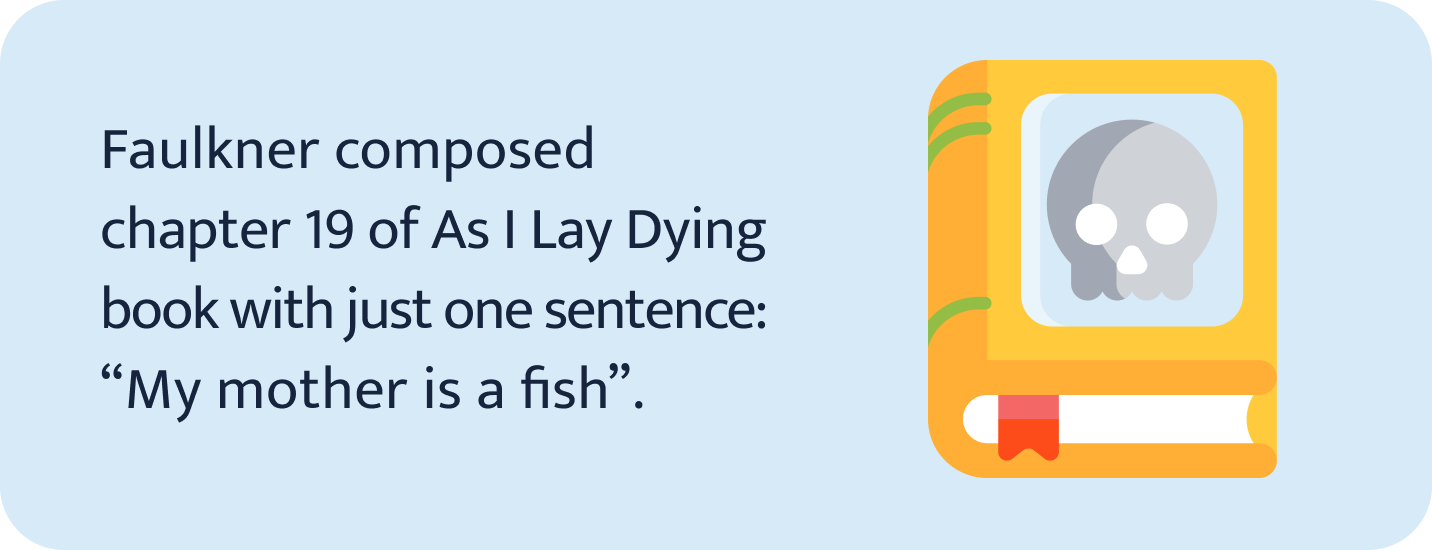
Contemporary Literature Essay Topics
Excellent books are still being written! Once in a while, your instructor may ask you to examine a more recent work. Here are a few great books to pick for your next essay.
- The theme of overcoming obstacles and poverty in Reservation Blues. Sherman Alexie’s novel Reservation Blues tells the story of a group of young men from the Spokane Indian reservation. They obtain the enchanted guitar of a legendary bluesman. Aside from overcoming obstacles, this book highlights many other themes of Native American life.
- Family obligations in Montana 1948 by Larry Watson. This novella is set in the Western American state of Montana, where a young man’s family struggles to survive. You may research the theme of family obligations in conjunction with loyalty and justice.
- The presentation of grief in The Lovely Bones. In Alice Sebold’s The Lovely Bones, the protagonist Susie dies violently. And then, her spirit proceeds to watch over the investigation of her disappearance and her family members’ lives.
- Self-sacrifice as one of the central themes of Harry Potter. You may also choose to write about any other theme of the Harry Potter series by J. K. Rowling. But remember: when you analyze a book that was turned into a movie, make sure to actually read the book!
- Cultural and religious references in Saunders’ Lincoln in the Bardo. One of the most acclaimed novels in recent years, Lincoln in the Bardo deals with the themes of death and the afterlife. A Tibetan concept of bardo inspires Saunders’ work, but the author also borrows ideas from other cultures and religions.
- The theme of cultural assimilation in Chimamanda Ngozi Adichie’s Americanah. In her third novel, Adichie draws upon her personal experiences to tackle the issues African immigrants face when they move to the US. Explore the effects of immigration on the protagonist’s personality, views, and behavior.
- Hypocrisy as the central theme of Ian McEwan’s Amsterdam. In Amsterdam, McEwan explores the contrast between public figures’ statements and their personal lives. None of the major characters in the novel act in accordance with their ethical standards. We suggest you focus on the figures of Clive, Vernon, and Julian.
- Paul Beatty’s The Sellout: Satire on racial stereotypes. Beatty employs satire and irony to tackle some of the most pressing current issues in American society. The Sellout can be used as an encyclopedia of stereotypes associated with African Americans. Explore how the author uses literary devices to highlight their absurdity.
- Cloning ethics in Kazuo Ishiguro’s Never Let Me Go. In the dystopian world of Never Let Me Go, cloning is a common practice. However, clones are used only as organ donors; they are not perceived as human beings. Explain how Ishiguro uses the narrative to challenge this social norm. For example, his characters can make art and fall in love.
- Comparison of the New and Old Gods in Neil Gaiman’s American Gods. In American Gods, the narrative is based on the idea that humans created deities. The Old Gods in mythology represent the forces of nature, and The New Gods represent technologies that shape modern society. Discuss the similarities and differences between these two groups.
🖋️ Literary Analysis Essay Topics: Poetry
Many of the great works of literature are poems. Writing about them requires a special approach. Here’s a tip: don’t be afraid to quote the poem heavily and give several alternative interpretations. But first, check out this list of excellent topics:
- A real-life war experience in Crane’s War is Kind. An American poet and writer Stephen Crane wrote the acclaimed American Civil War novel The Red Badge of Courage. But not everyone knows that he also wrote a collection of poems entitled War is Kind. Through these poems, he delved deep into the themes of war and violence based on his experience in the Spanish–American and Greco–Turkish Wars.
- The theme of religion in John Donne’s sonnets. At the opposite end of the poetry spectrum, you can find the Elizabethan-era Englishman, John Donne. His works were written mainly in the form of sonnets focused on the themes of love, social criticism, death, and religion.
- Mysticism in William Butler Yeats’s poetry. The occult, spiritualism, and Irish mythology profoundly influenced Yeats’ work. Many of his poems are preoccupied with the Apocalypse, immortality of the human soul, and the spirit world. Start your research with The Second Coming and Sailing to Byzantium.
- Allusions in Edgar Allan Poe’s The Raven. The Raven is widely recognized as one of the most famous poems of all time. It contains numerous references and allusions to the Bible, folklore, and other literary works. Examine and quote Poe’s sources of inspiration.
- The meaning of The Road Not Taken by Robert Frost. Robert Frost’s poetry is often praised for his rich metaphorical language. The Road Not Taken is a quintessential piece that’s often misunderstood. In your essay, you may explore its alternative interpretations.
- The evolution of blank verse in English poetry. Blank verse emerged in English poetry in the 16th century. Since then, it has been utilized by some of the most noteworthy poets. While its main features have remained unchanged, many prominent authors experimented with its form. For instance, you could analyze the use of blank verse in the poetry of Shakespeare, Milton, and Wordsworth.
- Main themes and features of Beat poetry. The Beat movement played a pivotal role in the cultural processes in the post-war US. Beat poetry is noted for rebellion, transgression, and experiments with form. Some of the authors to check out are Allen Ginsberg, Gregory Corso, Lawrence Ferlinghetti, and Gary Snyder.
- The narrator in Walt Whitman’s Song of Myself. Unlike many poets of his time, Whitman rejected the dichotomy of body and soul. In Song of Myself, the narrator represents the union of the “temporary” human body with the immortal soul. Consider exploring Whitman’s philosophy behind the notion of “self” in the poem.
- William Blake’s influence on British and American poetry and culture. Blake’s contemporaries largely disregarded his poetry. Yet, his impact on the later generations is hard to exaggerate. His values and ideas inspired the Pre-Raphaelites, the Beat Generation, and some of the prominent figures of the American music scene, like Bob Dylan and Jim Morrison.
🎭 Literary Analysis: Shakespeare Essay Topics
Romeo and Juliet Essay Topics
How many of Romeo and Juliet personal responses and analysis essays have already been written? Probably too many to count. But there’s still room for more. Romeo and Juliet essay examples can help you find a creative idea for a paper about the play. Another option is to check out the top Romeo and Juliet themes below:
- How does fate affect the love plot in Romeo and Juliet?
- Concept of contrasts in the language of the play.
- The significance of time in Romeo and Juliet
- The tragic love theme of Romeo and Juliet as a cliché for romantic fatalism
- Mercutio as a personification of loyalty
- Montagues and Capulets: the conflict between generations
- How is irony incorporated in the play?
- The role of the family in Romeo and Juliet
- The social and historical context of the play
- Nurse’s role in the death of Romeo and Juliet
Hamlet Essay Topics
This play by Shakespeare may be the most widely assigned play in the English courses. Here are the top Hamlet essay topics worth discussing.
- The theme of disillusionment in Hamlet
- Mistreatment of females in Hamlet as a depiction of misogyny in Shakespeare’s times
- How has the tragedy’s theme of insanity affected modern literature?
- What role does melancholia play in Hamlet?
- The connection between friendship and treachery in the character of Laertes
- Comedic elements in Hamlet
- The impact of Gertrude and Claudius’ marriage on Hamlet’s revenge
- What is the symbolism of The Mousetrap play?
- The impact of introspection on Hamlet’s revenge
- Analysis of the Denmark setting in Hamlet
Macbeth Essay Topics
Shakespeare’s Macbeth is the last (and shortest) of the three big Shakespeare plays every high school student reads. As with Shakespeare’s other tragedies, Macbeth explores meaningful themes that can be researched in literary essays.
- The corrupting impact of ambition in Macbeth
- Supernatural elements in Macbeth
- The significance of loyalty and betrayal to the plot
- What does sleep symbolize in the play?
- Why is Macbeth a victim of fate?
- The role of darkness as a setting in Macbeth
- Is blood a symbol of guilt in Macbeth?
- The causes of Macbeth’s mental decline
- The impact of Macbeth’s hallucinations on his character development
- Minor characters’ contributions to the play’s action
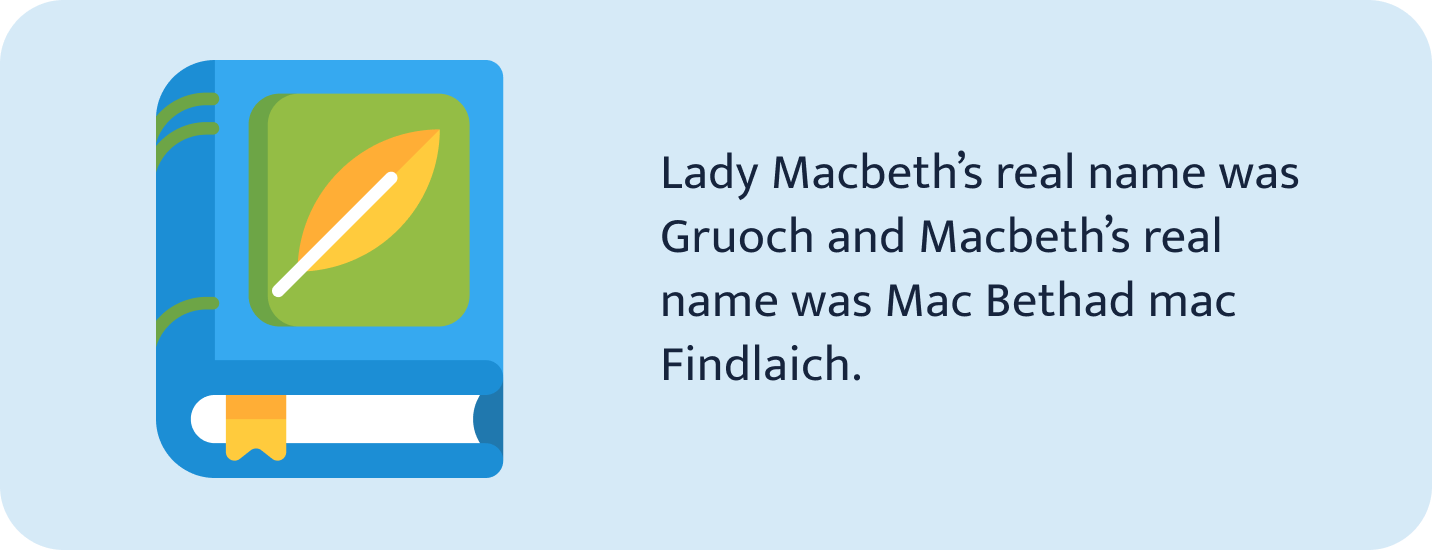
Shakespeare wrote many more plays beyond the big three listed above. Here are a few more topics and works that show the range of the Bard.
- The theme of madness in King Lear. Shakespeare’s King Lear is one of the longest works by the Bard. Many actors feel that the title role is one of the most challenging available for an actor because of the character’s gradual descent into madness. Accordingly, “madness” is perhaps the best topic related to this play.
- The presentation of love and adoration in Sonnet 18. Shakespeare’s sonnets make excellent essay topics because they are so concise but rich in meaning. Love and devotion, which are expressed in Sonnet 18 and throughout his other sonnets, serve as great critical analysis essay topics.
- The theme of the crown in Shakespeare’s Henry IV
- Sexuality, sensuality, and spirituality in William Shakespeare’s sonnets
- Ambition in Hamlet and Macbeth: choices of men and women characters
- The use of disguise in The Twelfth Night
- Different faces of love in Shakespeare’s sonnets and plays
- Appearance as the most potent disguise in Shakespeare’s plays
- The use of satire in William Shakespeare’s comedies and tragedies
- The line between acting and real life in Hamlet
- Parallels between Shakespeare’s King Lear and Sophocles’ Oedipus Rex
- The use of allusion in The Tempest
- The complexity of the female character in Shakespeare’s Antony and Cleopatra
- Archetypal female characters in Shakespeare’s plays and sonnets
- William Shakespeare’s authorship: style, vocabulary, themes, and dates
- The role of Shakespeare in the world of literature
- How does William Shakespeare use the meter in his plays?
- The depiction of the supernatural in Macbeth, The Tempest, and A Midsummer Night’s Dream
- The theme of race and ethnicity in Othello
- Personal identity in Hamlet and Henry IV
By the way, you can find all of Shakespeare’s works on our website for free.
📚 English Literature Essay Topics: Different Authors
Some can find it easier to focus on particular authors and their works. Are you one of them? Here are possible topics for those who like traditional approaches.
Literary Analysis Essay Topics: Geoffrey Chaucer
- Chaucer’s works of the French and Italian periods
- Primary themes and motifs in Troilus and Criseyde
- Women’s virtues, as seen by Chaucer and his contemporaries
- Gender: conventions and innovations in Geoffrey Chaucer’s works
- Chaucer’s role in the development of a heroic couplet
- Chaucer’s use of the vernacular language: nobility and nation
- Religious morals in The Canterbury Tales
- The roots of class conflict in The Canterbury Tales
- Chaucer’s influence on modern English dialects
- The critique of clergy in The Canterbury Tales
- The influence of medieval Italian poetry on Chaucer’s work
- Central themes in Geoffrey Chaucer’s The Book of the Duchess
- The comparison of Chaucer’s Troilus and Criseyde and Shakespeare’s Troilus and Cressida
- Elements of comedy in The Canterbury Tales
- Chaucer as a pioneer of rhyme royal in English poetry
- Chaucer’s primary sources of inspiration in Roman poetry: Ovid and Virgil
- The depiction of the middle class in The Canterbury Tales
Literary Essay Topics on John Keats
- Different shapes of death in John Keats’s works
- What was wrong with Keats’s Otho the Great?
- Byron’s influence on Keats’s style and themes
- The uniqueness of John Keats’ imagery
- Keats’s letters and their influence on the English literature
- Greek classics as a source of inspiration for Keats
- Keats’ stance on social and political issues of his time
- The importance of nature in Keats’ odes
- The themes of melancholy and isolation in Keats’ poetry
- Keats’ perception of art and its role in Ode on a Grecian Urn
- The polemics on Keats’ statement “Beauty is truth”
- The values of Romanticism in Keats’ poetry
- Keats’ concept of negative capability and its examples in his poetry
- The differences between the Romantic poetry of Keats and Coleridge
- Keats’ attitude towards Christianity and pagan mythology
Literature Essay Topics on Oscar Wilde
- A perfect wife as depicted in An Ideal Husband
- The Picture of Dorian Gray as the aesthete’s manifesto
- Wilde’s essential inspirations and the development of his views
- The Picture of Dorian Gray: will beauty save the world?
- Oscar Wilde’s personal traits in his characters
- The Picture of Dorian Gray: Lord Henry’s morality or immorality
- Irony, sarcasm, and satire in Oscar Wilde’s works
- The use of metaphors in The Ballad of Reading Gaol
- The Picture of Dorian Gray: was the young man innocent?
- Conventions and innovations in Oscar Wilde’s fairy stories
- Oscar Wilde as the most celebrated master of paradox
- Play on words in Oscar Wilde’s major works
- Christian theme in De Profundis
- The Importance of Being Earnest as the critique of Victorian society
- The role of the Dance of the Seven Veils in Wilde’s Salome
- Wilde’s aesthetic philosophy in his essay The Critic as Artist
- The Soul of Man under Socialism: an expression of Wilde’s political views
- Wilde as one of the key figures of the Decadent movement
- Women characters in Oscar Wilde’s comedies
- The theme of sacrifice in Wilde’s short stories
- The dichotomy of body and soul in The Picture of Dorian Gray and The Fisherman and His Soul
- The recurring motifs in Oscar Wilde’s comedies
George Orwell Literary Analysis Essay Topics
- Orwell’s imagery in the depiction of totalitarian regimes
- George Orwell’s background: inspirations for themes and symbols
- Orwell’s views on the English language and literature
- The historical context of 1984 and Animal Farm
- The role of the media in Orwell’s characters’ lives
- The character of the Big Brother in 1984
- Naturalism and imagery in The Road to Wigan Pier
- Why was Animal Farm regarded as controversial in the 1950s?
- Orwell’s religious views in Lear, Tolstoy, and the Fool
- Winston Smith’s journey to freedom in 1984
💡 Literary Analysis Topics in Non-Fiction
The world of literature goes far beyond William Shakespeare and fiction in general. Here is a bunch of more literary analysis paper topics for other great works of literature that deal with real-life events.
- Religious faith and dehumanization in Night. Elie Wiesel’s classic memoir of the Holocaust is a difficult book for many students to read. And yet, you may need to write a Night by Elie Wiesel essay at some point. Religion and dehumanization are prominent themes that can serve as great topics.
- The power of nature in Jon Krakauer’s Into the Wild. The story chronicles the journey of 22-year-old Christopher McCandless from modern society into a 2-year trip in the wilderness of the western United States. This work of non-fiction explores the themes of escape, community, and the power of nature. (Warning: things do not end well for McCandless along the Stampede Trail of Alaska.)
- Why We Can’t Wait by Martin Luther King as a source of inspiration for modern politicians and activists. Based on his Letter from Birmingham Jail, MLK’s Why We Can’t Wait is a study of the origins of the civil rights movement in the US. Analyze how activists and politicians can use ideas from this book in the 21st century.
- The themes of religion and technological progress in The Education of Henry Adams. In his autobiography, Henry Adams explores the influence of religion and technological progress on society. In the industrial world, technology has become a new religion. You may contrast and compare technological and religious societies in Adams’ work.
- The banality of evil in Hannah Arendt’s Eichmann in Jerusalem. Hannah Arendt offers an original perspective on the nature of war crimes. According to her, ordinary people are capable of the most terrible deeds under specific circumstances. In your essay, explore Arendt’s concept of “the banality of evil.”
- The role of photography in modern society, according to Susan Sontag. In her book On Photography, Susan Sontag explores how the role of this medium has been changing throughout the 20th century. Analyze her arguments to establish the relationship between photography and political and social processes.
- A Room of One’s Own as a manifesto of women’s literature. A Room of One’s Own reflects the women’s position in the literary scene. Woolf concludes that women’s writing capabilities match those of men. However, they often fail to reach their full potential because of the flawed structure of a male-dominated society.
- Haruki Murakami’s Underground: a study of Japanese society. For Underground, Murakami conducted a series of interviews after the terrorist attack on the Tokyo subway. Rather than focusing on the act itself, the author uses this opportunity to explore the social issues that plague Japanese society.
- T. S. Eliot’s literary criticism and views on poetry. T. S. Eliot is one of the most important literary critics and theorists of the early 20th century. His theories and arguments have largely shaped the New Criticism movement in literature. Analyze the ideas expressed in Tradition and the Individual Talent and Hamlet and His Problems.
⭐ Literary Analysis Topics: Other Ideas
Literary essays don’t have to be devoted to analyzing a particular work. They may also include textual analysis essays, literary interpretations, critical response essays, and topic analyses. Here are some excellent options for you to consider:
- Character development of various protagonists. You may write an analytical essay describing and interpreting changes in the central characters of different novels. Try to be precise, provide examples, and prove the significance of these changes. You can consider the development of Soames in The Forsyte Saga or the title character in David Copperfield.
- Context analysis of a historical period. Your analysis paper can be devoted to the settings of the short story, play, poem, or novel. Make emphasis on the role of the context in explaining the characters and the key ideas. For example, you can explore the wartime setting in Gone with the Wind.
- Analysis of genre conventions. Another good choice is to dwell upon the practices used by various authors belonging to the same literary genre. You can write a critical essay about a realistic, romantic, gothic, or any other kind of novel and the author’s ability to meet or challenge genre expectations.
- The impact of an author’s life on their legacy. The background of a novelist, short-story writer, poet, or playwright may also be of great interest to the reader. However, it is not enough to narrate the author’s life: you must be able to connect it with their style and themes. The most demonstrative analysis examples may include Henry Miller, Ernest Hemingway, and Lord Byron.
- Comparative analysis of two authors. It is also a good idea to compare several authors. A critical evaluation essay may estimate their impact on the development of their genre. If these authors come from different backgrounds, it is also possible to evaluate how the culture they belonged to made a difference. For example, write about Dickens vs. Thackeray or Joyce vs. Woolf.
- Comparative analysis of two texts. If you don’t want to compare authors, you may try comparing two literary works on the same topic or belonging to the same epoch or genre. For example, try analyzing the similarities and differences between Canterbury Tales and Decameron.
- Analysis of a literary work’s structure. Analysis topics may include the stream-of-consciousness technique, theater of the absurd, etc. The idea is to show how new expressive means transformed the traditional approach to plot building and character development.
- The role of irony in short stories. If you are to analyze a short story, you may describe how the author uses irony to communicate their message. Show how it creates meaning and what underlies it. Numerous authors employ irony as the major tool in their short stories, including Jerome K. Jerome and Salinger.
- Analyzing the climax in a novel. Describing how the author builds the plot to reach the culmination is a good option for a novel critical analysis essay. Track how the tension is created and how it is released when the climax is reached. For example, you can try analyzing the climax in To Kill a Mockingbird.
- Mood expression in a novel of your choice. Your essay may investigate how the vocabulary and grammar chosen by an author contribute to the text’s atmosphere. You can consider analyzing Lolita or Sons and Lovers.
- The role of dialogue in plays. Your critical paper may highlight what means the playwright uses to make the characters’ speech expressive. For example, examine Oscar Wilde’s plays or Samuel Beckett’s Waiting for Godot.
- Stage directions in plays. You may also want to pay attention to the importance of the author’s notes and scene directions in a play. They are particularly crucial in modern drama. Consider analyzing Beckett’s Waiting for Godot or Shaw’s Heartbreak House.
- The use of allegory in poems. It’s an excellent topic for poem analysis. You can suggest your own literary interpretation of an allegory or consider why the author opted for this device. For example, consider analyzing the allegories in Vision of Judgement.
- An open ending in a novel. Suppose the work under analysis doesn’t have a conflict resolution. In that case, your critical evaluation essay can give arguments for the author’s choice and interpret its meaning and possible continuation scenarios. For example, you may analyze an open ending in Joyce’s Finnegans Wake.
- Comparison of critical opinions on a novel. If the piece you have read ranks among the best-known works in the world, it would be a good idea to compare literary criticism examples related to this work. You may select two different critics and juxtapose their views. For example, try comparing critical opinions on Mrs. Dalloway.
- Analyzing side characters in literary works. If your task is to analyze a character, it doesn’t necessarily mean you should write about a protagonist. A more creative approach would be to pick a static character that doesn’t go through any transformations throughout the book and suggest why the author made them this way. One option is to write about side characters in Vanity Fair.
- The narrative voice in novels. It can be challenging yet enjoyable to describe the narrative voice and focalization techniques that help the reader see the events in a certain way. It is especially complicated when a text has several points of view. For example, you may choose to analyze the narrative voice in Faulkner’s Absalom! Absalom! or As I Lay Dying.
- The narrators in literature. The previous topic can be narrowed: you can take a work written from a first-person point of view and draw parallels between the author and the main character. For example, you can consider writing about the narrator in Moby Dick.
- The cultural background of Dumas’ novels. In the case of historical novels, an analytical paragraph may be devoted to the historical and cultural background. Any of Alexandre Dumas’ novels, such as The Three Musketeers, may serve as perfect literature examples to write about.
- Imagery used by various poets. You can analyze specific images that poets use in their works. For example, try analyzing how Walt Whitman uses industrial imagery in his works.
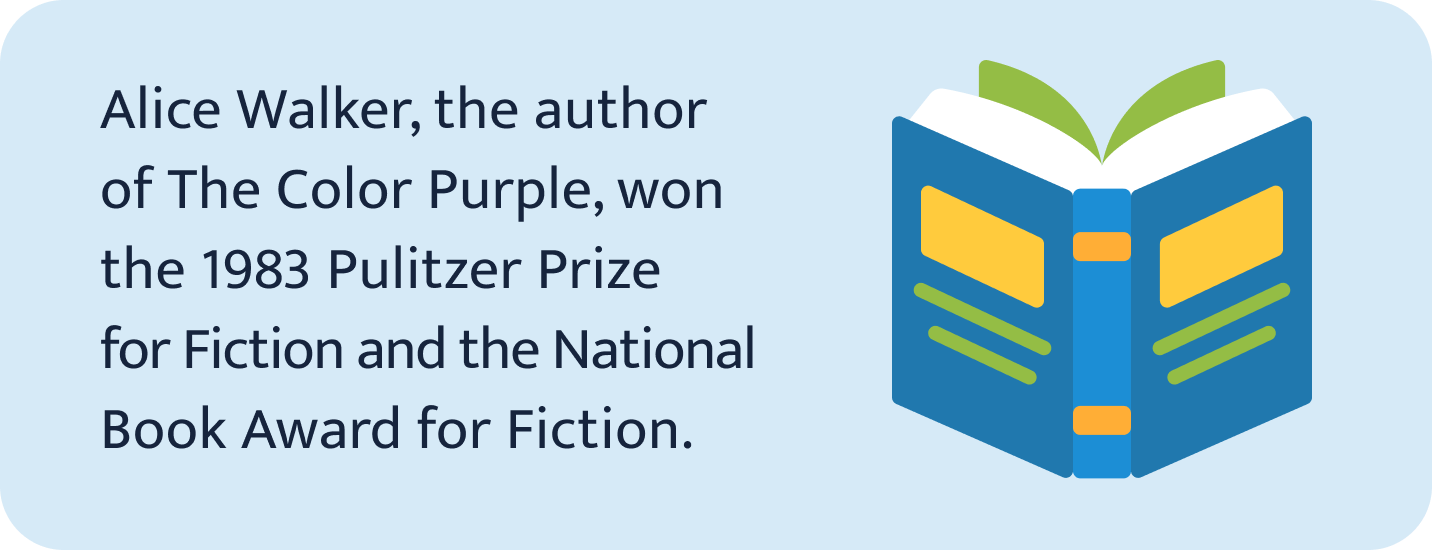
Profound Literary Analysis Topics in Women’s Literature
Literary analysis on the topics of gender and women in society is critical to understanding the modern world. Here are a few powerful essay topics in this area.
- The disruption of traditional gender roles in The Color Purple. According to New Republic, this National Book Award-winning work is considered a cultural touchstone for African American women. It features many heavy themes, such as sexism and racism. Keep in mind that this book is not for the faint of heart.
- The themes of family and generational differences in Alice Walker’s short story Everyday Use. The short story is about heirloom possessions passed down from one generation of women to another.
- Social standing and wealth as the two key themes in Pride and Prejudice. The protagonist of this book, Elizabeth Bennet, must choose between two suitors. One is an amiable man. The other is better established in society but has a colder personality.
- Marriage and social status in Emma. Emma is the tale of a young woman less interested in securing her own marriage than her sisters. You can analyze the constraints placed upon women in 17th-century society as reflected in this book.
- Women’s role in society and gender roles according to The Great Lawsuit. The Great Lawsuit is often considered one of the most important early feminist works. The author, Margaret Fuller, argues that gender equality is a crucial aspect of a progressive society. She describes an ideal relationship between a man and a woman as an intellectual companionship.
- Dystopia and feminism in A Handmaid’s Tale. In A Handmaid’s Tale, Margaret Atwood describes a world where women’s societal role is reduced to producing children. This work largely follows the traditions of classic dystopian novels written by Orwell and Huxley. Explore how the presence of the feminist discourse makes Atwood’s work stand out.
- Gertrude Stein’s experiments with form and style. Gertrude Stein’s work is notable for her distinctive avant-garde style. Stein was an avid art collector, and trends in visual arts influenced her writings. Her narratives are characterized by the original use of tenses, repetitions, and archaisms.
- The stream of consciousness in Virginia Woolf’s work. Virginia Woolf was one of the first writers to systematically use the stream of consciousness in her works. The narratives of her novels, such as Mrs. Dalloway and To the Lighthouse, are rooted in the descriptions of characters’ emotions and thoughts.
- Political writings of Mercy Otis Warren. Mercy Otis Warren is famous for her political poems and plays written during the American Revolution. Explain how she used political satire to criticize the British rule. Start your research with the plays The Adulateur, The Defeat, and The Group.
- Gender inequality in Jane Eyre. Widely recognized as one of the most successful works of women’s literature, Jane Eyre was a revolutionary novel for its time. It depicts the struggles of women in their fight for independence and equality in patriarchal Victorian society.
- The blend of fiction and reality in The Yellow Wallpaper. Charlotte Perkins Gilman wrote The Yellow Wallpaper to document the trauma and stress she had experienced due to “rest therapy” prescribed to her by a psychiatrist. Back then, women suffering from depression were discouraged from any intellectual activity, as it was thought that “domestic life” would benefit them. In Gilman’s story, this treatment ultimately drives the protagonist to insanity.
- Cleopatra in literature: from Geoffrey Chaucer to Margaret George
- The depiction of Eve in Milton’s Paradise Lost
- Archetypical female and male characters in Beowulf
- Emmy’s submissiveness and Rebecca’s quick-wittedness in Vanity Fair
- William Makepeace Thackeray’s Becky Sharp as an antihero
- Becky Sharp as seen by Thackeray’s contemporaries and modern readers
- Women empowerment and independence in Jane Austen’s novels
- Women’s love and death: Shakespeare’s Ophelia and Wilde’s Sibyl
- A Room of One’s Own: a woman’s manifesto still relevant now
- First female voices in the Middle Ages: Aelia Eudocia Augusta
- The Brontë sisters: Lady writers who broke the rules
- Gender roles as depicted by Maugham in Theatre
- This is the woman’s world: feminist utopias and dystopias
- Female writers: themes explored in the 1910s vs. 2010s
- Women characters’ virtues and vices in the 19th century
- Women of color: themes of violence, discrimination, and empowerment
- A Doll’s House as seen by Ibsen’s contemporaries
- Is Ibsen’s A Doll’s House still relevant today?
- Beauty standards as women’s oppression in The Bluest Eye
- The complexity of the mother-daughter relationship in Tony Morrison’s Beloved
- The evolvement of masculinity from medieval to postmodern literature
- Masculinity in The Garden of Eden by Ernest Hemingway
- Masculinity, identity, and queerness in Tennessee Williams’s works
- Gender roles in utopias and dystopias: More and Huxley
- Sexuality and gender stereotypes in Williams’s A Streetcar Named Desire
- Charles Dickens’s depiction of aging men and women
- Fairy tales as sources of gender stereotypes
Powerful Literary Analysis Topics within the Subject of Race
- Colonialism in J. M. Coetzee’s Waiting for the Barbarians. A short Waiting for the Barbarians summary should capture the narrative of the escalation of tensions between a fictional colonial town and its surrounding indigenous population. When the protagonist helps a native woman, he begins to doubt the humanity of colonialism.
- The portrayal of racism in Joseph Conrad’s Heart of Darkness. Heart of Darkness is the chilling tale of young Marlow’s voyage up the Congo River. There he meets the wicked ivory trader Kurtz. The book explores the themes of imperialism and racism. It also questions the civility of Western society over supposedly “savage” indigenous people.
- The conflict between man and nature in The Adventures of Huckleberry Finn. Mark Twain is one of the greatest American writers and satirists. But his masterpiece The Adventures of Huckleberry Finn delved into themes that would make some of the most serious literary analysis essay topics, such as the theme of freedom vs. slavery.
- The theme of prejudice in To Kill a Mockingbird. Harper Lee’s novel was an instant classic upon release. To Kill a Mockingbird is set in the American South, and, like many books by Southern authors, it explores the themes of race and justice.
- Anti-slavery narrative and racist stereotypes in Uncle Tom’s Cabin. Uncle Tom’s Cabin was one of the first universally acclaimed novels to tackle slavery. However, it is often criticized for its stereotypical portrayal of Black characters. Hence, it remains one of the most controversial pieces of American literature.
- De Bois’ The Souls of Black Folk as the precursor of the Civil Rights movement. De Bois’ essays have largely laid the groundwork for the campaigns for racial equality in the 20th century. He argued that African Americans deserved fundamental rights the White population had: voting, getting a higher education, and being treated fairly according to the law.
- The notion of Black pride in A Raisin in the Sun. Lorraine Hansberry’s famous play touches upon topics of racial identity and pride inspired by real events. A Black family wants to purchase a house in a White neighborhood, but they are dissuaded from buying it. Eventually, they refuse to accept the buyout offer and move to their new place as planned.
- Jefferson as a folk hero in A Lesson Before Dying. In A Lesson Before Dying, Ernest J. Gaines tells a story of a young Black man wrongfully accused of murder. Treated by White people as a sub-human, Jefferson completely loses his self-esteem at some point. However, with the help of a local Black teacher, he regains his pride and meets death with dignity. Explain how Jefferson’s transformation makes him a folk hero.
- The impact of discriminatory laws on the life of African Americans in Fences. August Wilson’s Fences explores how discriminatory laws and attitudes defined the life of African Americans before the Civil Rights Movement. The protagonist, Troy Maxson, is a talented baseball player whose life is ruined because he didn’t get a chance to play in the professional league due to racial restrictions.
- Internalized racism in Morrison’s Song of Solomon. In her book Song of Solomon, Toni Morrison explores the issue of internalized racism. Hagar and Macon Dead are the characters to study. Macon Dead, a Black entrepreneur, hates people of color and wants to leave his community. Hagar envies women with a lighter skin tone, as she sees them as superior to her.
- I Know Why the Caged Bird Sings: A story of hatred and trauma. Maya Angelou is renowned for her autobiographical novels dealing with challenging topics like racism, trauma, and violence. I Know Why the Caged Bird Sings addresses the issues she faced growing up as a Black child in a White neighborhood.
Death-Related Literature Essay Topics
- Death in works of dying writers: Keats and Blake
- Death in Milton’s poetry: imagery and symbols
- Emily Dickinson’s fascination with decay, degradation, and death
- John Keats’s and William Shakespeare’s depictions of death
- Views on death in the Renaissance literature
- Murder and suicide in Shakespeare’s tragedies Hamlet and Romeo and Juliet
- Depictions of death in Postmodernist literature
- Aging as seen in medieval, Renaissance, and Postmodernist literature
- Death and decay in Oscar Wilde’s The Picture of Dorian Gray
- Love, life, and death in Huxley’s dystopian society
- Murder in John Steinbeck’s Of Mice and Men
- Herman Melville’s Moby Dick: The concepts of life and death
- Simon’s death in William Golding’s Lord of the Flies
- Kate Chopin’s ironic take on death in The Story of an Hour
- Seneca’s life and philosophy: Death as liberation
- The role of death in existentialism
- The theme of death in Ernest Hemingway’s works
- The depiction of heaven and hell in Richard Matheson’s What Dreams May Come
- The concept of free death in Friedrich Nietzsche’s philosophy
- Gothic writers’ fascination with death
- Hades: The realm of the dead in Greek mythology
Literary Analysis Essay Topics: Man and Nature
- Dehumanizing nature: Robinson Crusoe and Lord of the Flies
- Struggles with nature: Defoe’s Robinson Crusoe and Paulsen’s Hatchet
- Nature’s wonders and dangers in Emily Dickenson’s works
- Natural forces: from Homer to H. G. Wells
- Power of natural forces in William Shakespeare’s The Tempest
- The depiction of nature in Fears in Solitude by Coleridge
- William Wordsworth’s poetic language and symbols used to describe nature
- Nature in Brave New World: urban and rural settings
- Nature in post-apocalyptic novels: decay and revival
- The role of nature in Tolkien’s The Lord of the Rings
- The conflict between man and nature in Ernest Hemingway’s The Old Man and the Sea
- Post-apocalyptic fiction as the critique of industrial society
- Environmentalism in Ursula Le Guin’s works
- Personal life and climate change in Barbara Kingsolver’s Flight Behavior
- The role of nature in John Steinbeck’s East of Eden
- The emergence of eco-fiction—a new genre in world literature
- Nature in Romanticism: Comparison of Shelley’s, Wordsworth’s, and Keats’ poetry
- Natty Bumppo’s and Judge Temple’s conflicting views on nature in James Fenimore Cooper’s The Pioneers
- The impact of country life on the character development in Cormac McCarthy’s All the Pretty Horses
Literary Essay Topics on Religion
- Religious influences: biblical themes and allusions in Beowulf
- Religion as another burden in The Bluest Eye
- Views on religious conventions in Milton’s Paradise Lost
- Jonathan Swift’s satirical view of religions in Gulliver’s Travels
- The role of religion in Charles Dickens’s works
- The evolvement of religious beliefs in John Dryden’s works
- Religious controversies as depicted in John Milton’s Paradise Lost
- A spiritual journey in Thomas Hardy’s Jude the Obscure
- Biblical references in Herman Melville’s Moby Dick
- Alternative narrative of the Biblical events in Mikhail Bulgakov’s The Master and Margarita
- The meaning of Friedrich Nietzsche’s statement “God is Dead”
- Billy’s Christian values in Kurt Vonnegut’s Slaughterhouse-Five
- The figure of Moses in Biblical and Quranic narratives
- Influence of The Pilgrim’s Progress on British and American literature
- Buddhist and Hindu motives in Herman Hesse’s Siddhartha
- Immanuel Kant’s critique of the arguments for the existence of God and his discussion of morality
- Soren Kierkegaard’s critique of Christianity
- Christian narratives and metaphors in C.S. Lewis’ works
Literary Analysis Topics: Justice and Judgment
- The Hunchback of Notre Dame: who was the monster?
- Justice and judgment in To Kill a Mockingbird
- The role of judgment in Jane Austen’s novels
- Judgment in Toni Morrison’s God Help the Child
- A view of justice in John Milton’s Paradise Lost
- Justice in dystopian novels: works of Orwell and Huxley
- Judgment and guilt in Hawthorne’s The Scarlet Letter
- The difference between justice and revenge in Aeschylus Oresteia
- The genre of legal thriller in American literature
- The themes of guilt, responsibility, and punishment in Bernhard Schlink’s The Reader
- Justice and judgment in Fyodor Dostoevsky’s Crime and Punishment
- Courtroom drama in American and British literature
- Behavior modification experiment as an alternative to a prison sentence in Anthony Burgess’ A Clockwork Orange
- Jeremy Bentham’s concept of panopticon prison and its critique in the works of other authors
- Michel Foucault’s critique of the Western penal system
- The role of the judgment of Paris in the Trojan War according to Greek mythology
- Depiction of racial injustice in the works of African American authors
Literature Essay Topics on Good & Evil
- A dichotomy of good and evil in the Middle Ages
- Monsters and heroes in Beowulf: Beowulf, Hrothgar, Grendel
- Wilde’s aesthetics: ugly is worse than evil
- John Milton’s Satan: the good, the bad, and the beautiful
- Victorian literary tradition: societal norms and personal happiness
- Villains in the 19th– and 20th-century literary works
- The good and the bad: The Strange Case of Dr. Jekyll and Mr. Hyde
- Evil forces of death in The Fall of the House of Usher
- Presentation of good and evil in The Tempest characters
- The contrast between Thrushcross Grange and Wuthering Heights
- Young Goodman Brown: a conflict between morality and temptation
- The Creature and the humans in Frankenstein
Literary Analysis Essay Topics on War & Peace
- Depiction of war in Shakespeare’s plays
- The war between archangels and demons in Paradise Lost
- War in Brecht’s Mother Courage and Her Children
- War and peace in George Orwell’s 1984
- Margaret Mitchell’s and Toni Morrison’s views on the Civil War
- War as a part of human nature in Faulkner’s A Fable
- Steinbeck’s exploration of injustice in The Grapes of Wrath
- Wrongs of the modern society in Palahniuk’s Fight Club
- The themes of war and nationality in Michael Ondaatje’s The English Patient
- The Civil War as the background for Louisa May Alcott’s Little Women
- Main themes in Erich Maria Remarque’s All Quiet on the Western Front
- Depiction of war in Alexandre Dumas’ historical novels
- The Cold War in John Le Carre’s novels
- The political context of Arthur Miller’s The Crucible: The Cold War and McCarthyism
- Depiction of war in children’s fiction
- Leo Tolstoy’s views on history in War and Peace
- Anti-militarism in Ernest Hemingway’s Farewell to Arms
- Literature as a tool of cultural influence during the Cold War: The case of Boris Pasternak’s Doctor Zhivago
Literary Essay Topics on Vices on the Society
- Thackeray: the culture of the 19th century as Vanity Fair
- Dickens’s perspectives concerning social injustice in Oliver Twist
- Ethnicity, discrimination, and identity in Orwell’s Burmese Days
- Vices of totalitarian societies in George Orwell’s 1984
- Injustice, torture, and dehumanization in Elie Wiesel’s Night
- Vices of society in Francis Scott Fitzgerald’s The Great Gatsby
- J’Accuse: Emile Zola’s letter as critique of antisemitism and corruption
- The emergence of transgressive fiction as a protest against conventional society
- Critique of consumer society in Aldous Huxley’s A Brave New World
- Social satire and political commentary in Harold Pinter’s later plays
- Ray Bradbury’s science fiction as a means of social criticism
- The emergence of dystopia: Evgeny Zamyatin’s We
- Arthur Koestler’s Darkness at Noon as a critique of the totalitarian society
- Claudius as an embodiment of human vices in Robert Graves’ I, Claudius
- Geoffrey Chaucer’s critique of the wrongs of society in The Canterbury Tales
Interesting Literature Topics to Analyze: Literary Influences
- Percy Bysshe Shelley’s interpretation of the Prometheus myth
- William Shakespeare’s borrowings from ancient Greek writings and myths
- Myths as a source of inspiration for Byron and Keats
- Virginia Wolf’s fascination with Greek literature and Hellenism
- James Joyce’s interpretation and use of Homer’s The Odyssey
- Salome: Oscar Wilde’s retelling of a biblical story
- John Milton’s exploration and interpretation of a biblical story
- The influence of Keats’ Ode to a Nightingale on F. Scott Fitzgerald’s works
- Biblical motifs in Harry Potter and the Deathly Hallows by J.K. Rowling
- Don Quixote as an inspiration for Dostoyevsky’s The Idiot
- Beowulf’s impact on J. R. R. Tolkien’s The Hobbit
- Shakespearean myths in Moby-Dick by Herman Melville
Literature Essay Topics: Various Genres
- The evolution of horror fiction: from Mary Shelley to Stephen King
- The place of fantasy in the modern literature
- Why have fantasy novels gained such popularity today?
- Fantasy novels by Tolkien and Martin: styles, imagery, themes
- Major elements of modern fantasy novels and stories
- The origins of fantasy fiction: the earliest works
- The evolution of adventure fiction: from Homer to Fleming
- Horror fiction: Stoker’s Dracula vs. Shelley’s Frankenstein
- Theologus Autodidactus as an example of science fiction
- Merging scientific and poetic elements in science fiction poetry
- Comparing tragicomedies of Ancient Greece and 20th-century Europe
- Significant features of a tragicomedy in postmodernist and metamodernist writings
- Primary components of a coming-of-age novel: female and male perspectives
- Elements of the coming-of-age novel in London’s Martin Eden
- Satire in contemporary British and American literature
- Satire or cynical humor: exploring Bierce’s The Devil’s Dictionary
- Literary devices in naturalistic writing: Emile Zola’s approach
- Elements of an antinovel in Laurence Sterne’s Tristram Shandy
- Early examples of short stories: Charles Dickens’s style
- Timeframes and symbols in Jonathan Nolan’s Memento Mori
- Dystopian fiction in the 20th and 21st centuries
- Coming-of-age novel or American dream novel: The Great Gatsby
- The role of education and the media in dystopias
- Crime fiction: is it pulp reading or high literature?
- The suspense in Agatha Christies’ and Arthur Conan Doyle’s writings
- The vampire in the 19th-century and 21st-century literature
Literary Topics: Uncommon Themes in Literature
- Allegory and choice of animals in Orwell’s Animal Farm
- Allegories in Faulkner’s A Rose for Emily
- Multiculturalism and allusions in Toni Morrison’s Song of Solomon
- Faulkner’s metaphors in The Sound and the Fury
- Imagery in Edgar Allan Poe’s famous poem The Raven
- Music and enigma in The Raven
- The role of personification in William Blake’s poetry
- Comparing Ancient Greek and William Shakespeare’s iambic pentameter
- The function of trochaic meter in Shakespeare’s works
- Symbolism and imagery in William Blake’s poem Ah Sunflower
- Symbols and metaphors in The Picture of Dorian Gray
- Flower symbolism in D.H. Lawrence Odour of Chrysanthemums
- Color as a symbol of Morrison’s God Help the Child
- Symbolism in Le Guin’s The Ones Who Walk Away from Omelas
- Satire in Absalom and Achitophel by John Dryden
- Jane Austen’s personal traits in the narrator of Persuasion
- Early forms of the stream of consciousness: Jane Austen’s style
- Epistolary novels: works of Bram Stocker and Mary Shelley
- Slave’s narrative in Toni Morrison’s Song of Solomon
- Peculiarities of addressing the reader in Shakespeare’s sonnets
- Virginia Wolf’s stream of consciousness: narration or confession?
- The narrator in Somerset Maugham’s Of Human Bondage
- Authorial intrusion as a way to entice readers
🖊️ Literary Analysis Prompts: Top 21
We’ve gathered a total of 21 excellent literary analysis prompts for you. They cover a wide variety of genres and epochs, so you’ll surely find something that suits your needs. Check them out to gain inspiration for your assignment or project!
The Cask of Amontillado Literary Analysis Prompt
- The central theme of The Cask of Amontilladois revenge. In your essay, you can analyze how suspense contributes to the revenge plot.
- You may also explore the story’s tone and how it helps to build tension.
- Alternatively, you can focus on the Gothic elements and their impact on the story’s atmosphere.
A Rose for Emily Literary Analysis Prompt
- There are several important symbols in A Rose for Emily, such as a strand of hair, Emily’s house, or the ticking watch. You can dive deeper into their meaning and significance.
- You may also focus on the story’s themes. They include death and conflict between generations.
- Try analyzing literary devices Faulkner uses, including metaphors, irony, and personification. How do they contribute to the story’s mood?
The Story of an Hour Literary Analysis Prompt
- One of the central themes featured in The Story of an Hour is freedom. Analyze what kind of freedom is discussed and how free the main character really is.
- You may also explore Kate Chopin’s writing style. For example, focus on how irony complements the story’s plot and tone.
- Another aspect that you can focus on is symbolism. Notable examples include time, death, and heart trouble.
Tell-Tale Heart Literary Analysis Prompt
- Analyze why Edgar Allan Poe chose to tell the story in the first person. How does it contribute to the gloomy tone?
- Or, you may focus on the story’s themes: guilt, confinement, and mental health. How are they represented?
- Finally, you can examine the symbols in Tell-Tale Heart, such as the house, the bed, the bedroom, and the eye. Try to find out the meaning behind them.
Fahrenheit 451 Literary Analysis Prompt
- Explore the use of animal imagery and the lack of nature descriptions in the novel.
- You can also focus on the harmful effect of technology and its contribution to the dystopian world of Fahrenheit 451.
- The story’s central theme is censorship vs. freedom of speech. You may explore this conflict in your essay.
Prompt for a Literary Analysis of The Canterbury Tales
- Analyze the themes of The Canterbury Tales. These include deceit, the church’s corruption, and the importance of company.
- Focus on examining the writing style. Try to clarify how it contributes to the tales’ tone and atmosphere.
- You may also research the symbols, such as clothing, appearance, and spring. If you’re curious about this literary work, check out our article on the symbols in The Canterbury Tales.
Prompt for a Literary Analysis of Barn Burning
- Consider examining the conflict between loyalty to one’s family and obedience to the law.
- Focus on scrutinizing the symbols of Barn Burning, such as the soiled egg and fire.
- You can also highlight the role of darkness in the story. Dive deeper into its contribution to the tone of Barn Burning.
Make sure to check out our Barn Burning study guide to learn more facts about the story.
Death of a Salesman Literary Analysis Prompt
- Examine how the author covers the American dream theme in Death of a Salesman. What is the characters’ interpretation of the American dream?
- You can also try analyzing the symbols in the play, such as diamonds, seeds, the rubber hose, and Linda’s stockings.
- You may also concentrate on studying the mythological figures connected with the story. Dive deeper into the comparisons to the Greek gods, such as Hercules and Adonis.
Want to know more? Check out our Death of a Salesman study guide.
Frankenstein Literary Analysis Essay Prompt
- In your paper, you can focus on the symbols of Frankenstein, such as darkness and fire. Why are they essential?
- Another aspect you can concentrate on is the point of view. Mary Shelley writes from the viewpoints of 3 diverse characters. What does it help to achieve?
- You can also explore the novel’s themes: sublime nature, family, creation, and dangerous knowledge. Check out our article on the themes in Frankenstein to learn more about them.
Hamlet Literary Analysis Essay Prompt
- There are numerous themes in Hamlet that you can scrutinize in your essay, like revenge, the supernatural, death, corruption, and politics.
- You can also focus on the symbols of the story and their importance. They include Hamlet’s dark clothes, the skull, and the weather.
- One of the motifs in Hamlet is misogyny. You can analyze its representation in the play.
To understand the play better, check out our Hamlet study guide.
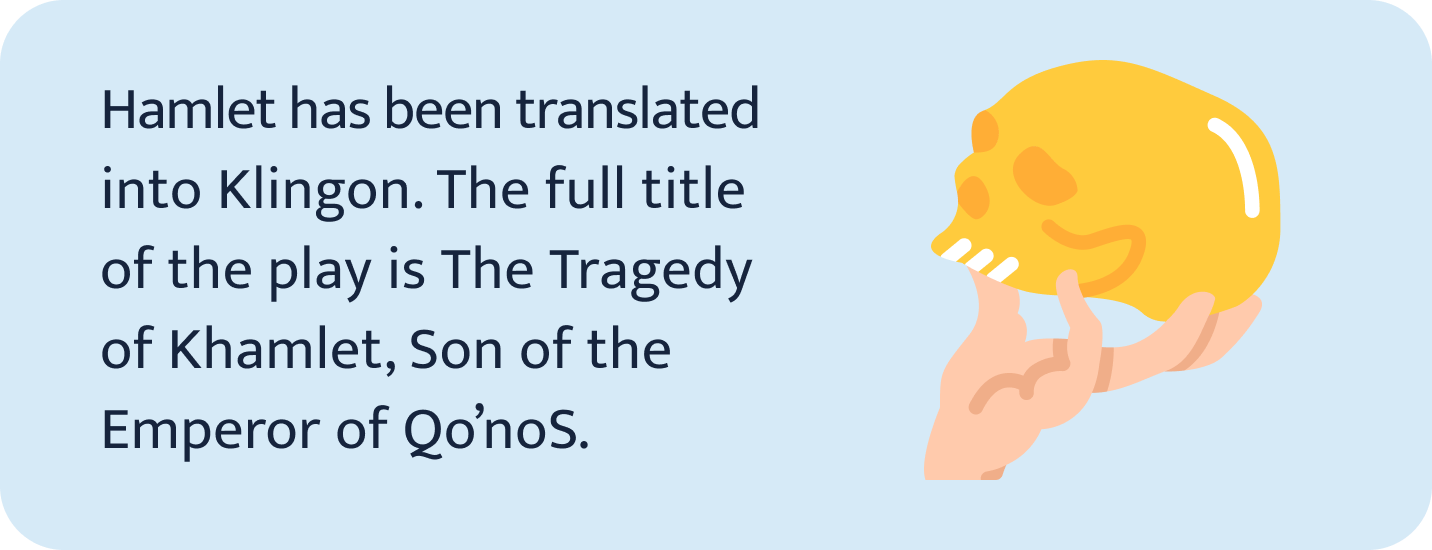
Prompt for a Literary Analysis of Night by Elie Wiesel
- One of the themes of Night is silence. You can explain why it is critical and what it represents.
- You can also focus on the symbolism of night and fire. Try to find out the meaning behind them.
- Consider discussing the characters in the novel and their behavior in dramatic situations. Check out our article on characters in Night to learn more.
Othello Literary Analysis Prompt
- One of the central themes of Othello is isolation and its dangers. Examine how it is portrayed.
- Another theme you can analyze is that of justice. Try highlighting how the characters are driven by the desire to do always the right thing.
- Consider exploring the famous metaphors from the play, such as jealousy being a “green-eyed monster.”
If you want to comprehend this literary work better, make sure to check out our Othello study guide.
Pride and Prejudice Literary Analysis Prompt
- When it comes to the themes in Pride and Prejudice, you can focus on integrity, love, family, gender, class, and reputation.
- Another central theme of the novel is marriage. Discuss the value of marriage and its connection to social status and money.
- In your paper, you can elaborate on the symbolism of dancing and its meaning.
Don’t forget to look through our study guide on Pride and Prejudice to learn more about the novel’s elements.
Sir Gawain and the Green Knight Literary Analysis Prompt
- Consider analyzing the motifs of Sir Gawain and the Green Knight: games, the color green, and the seasons.
- Apart from the motifs, you can also research the themes of nature, chivalry, Christianity, courtesy, and truth. To learn more about them, examine our article on the themes of Sir Gawain and the Green Knight.
- Finally, you may study the symbolism of the green girdle. It’s a critical element of the poem and deserves special attention.
The Great Gatsby Literary Analysis Essay Prompt
- One of the most popular symbols of The Great Gatsby is the green light. You can concentrate on exploring its iconic status in world literature.
- One of the central themes of The Great Gatsby is the American dream. Analyze how it is depicted and the author’s attitude to it.
- Another idea for an essay is to write about the novel’s characters: Jay Gatsby, Nick Carraway, the Buchanans, and others. Make sure to read our article on The Great Gatsby characters to grasp them better.
The Lottery Literary Analysis Prompt
- What role do family ties play in The Lottery? You can dive deeper into this motif and scrutinize its meaning and importance.
- Another central theme of The Lottery is tradition. Your work can focus on how dangerous it is to follow conventional practices blindly.
- The lottery itself is the key symbol of the story. You could explain what it represents. And remember to check out our analysis of The Lottery to learn more.
Kafka’s Metamorphosis Literary Analysis Prompt
- One of the major themes of Metamorphosis is psychological distance. You can highlight how the main character’s transformation leads to his alienation.
- Explore the story’s recurring symbols, such as food, the father’s uniform, and the portrait of a woman wearing furs.
- Another point that you can elucidate is the motifs of the story. They include transformation and sleep.
You’re welcome to read our The Metamorphosis study guide for deeper insight into the story.
The Necklace Literary Analysis Prompt
- Analyze the story’s themes. Some examples are greed, the deceptiveness of appearances, and vanity. Check out our article on The Necklace’s themes to learn all about them.
- You can also interpret the symbolism of the necklace. Try to dive deeper into how a piece of jewelry is linked to high status and wealth.
- Explore how the class conflict is presented in The Necklace. You might also explicate the author’s views on it.
The Odyssey Literary Analysis Prompt
- In your essay, focus on the epic’s main themes: vengeance, hospitality, and loyalty.
- Homer uses many epithets in The Odyssey to describe the sea, such as “wine-dark.” Look into what they may represent.
- Another good point for discussion is the symbolism. Consider discussing the significance of the wedding bed, the sea, eagles, and food.
To appreciate the poem better, check out our The Odyssey study guide.
The Yellow Wallpaper Literary Analysis Essay Prompt
- The wallpaper is the central symbol of the story. In your writing, try to uncover its significance and how it affects the protagonist.
- You can also review how Charlotte Perkins Gilman uses different types of irony in the story. Examples include dramatic, verbal, and situational irony.
- You can also interpret The Yellow Wallpaper’s themes. Some of them are self-expression, mental illness, gender roles, miscommunication, and the role of women.
Don’t forget to check out our study guide if you want to know more.
Wuthering Heights Literary Analysis Prompt
- Explore the symbolism of moors, nature, and ghosts. Emily Bronte uses these symbols to represent not only abstract ideas but also characters’ personalities.
- You can also examine the central themes of Wuthering Heights. Some of them are love and passion, class conflict, revenge, and the supernatural.
- Another point worth writing about is nature imagery and how the author uses it to represent the characters’ personalities. To learn about it, make sure to check out our Wuthering Heights analysis.
✍️ Writing a Literary Analysis: Step by Step
Now, after you’ve decided on your topic, it is time to write your analysis.
Don’t know where to start? Well, we got your back! Here are some steps for you to write a great literary essay.
- Step #1. Carefully read the text and think of possible topics. Is there anything that stands out? What did you personally find interesting? Focus on what you will enjoy researching and writing about.
- Step #2. Think of the text’s idea. Find out the main point of the literary work. Pay attention to the settings, plot, dialogue, tone, writing techniques, figures of speech, and character development.
- Step #3. Now, it’s time to create a thesis statement. Try to make it clear but debatable.
- Step #4. After you are done with the thesis, try to find more evidence in the text and organize it. Make sure your thesis interprets the evidence you found.
- Step #5. Create a rough draft. Making an outline and a bubble map can help organize your ideas and draw the connections between them.
- Step #6. You can now revise your rough draft. Don’t forget to proofread your essay and check your punctuation, writing style, transitions, grammar, and paper structure. Make sure your thesis is stated clearly, and your evidence supports it.
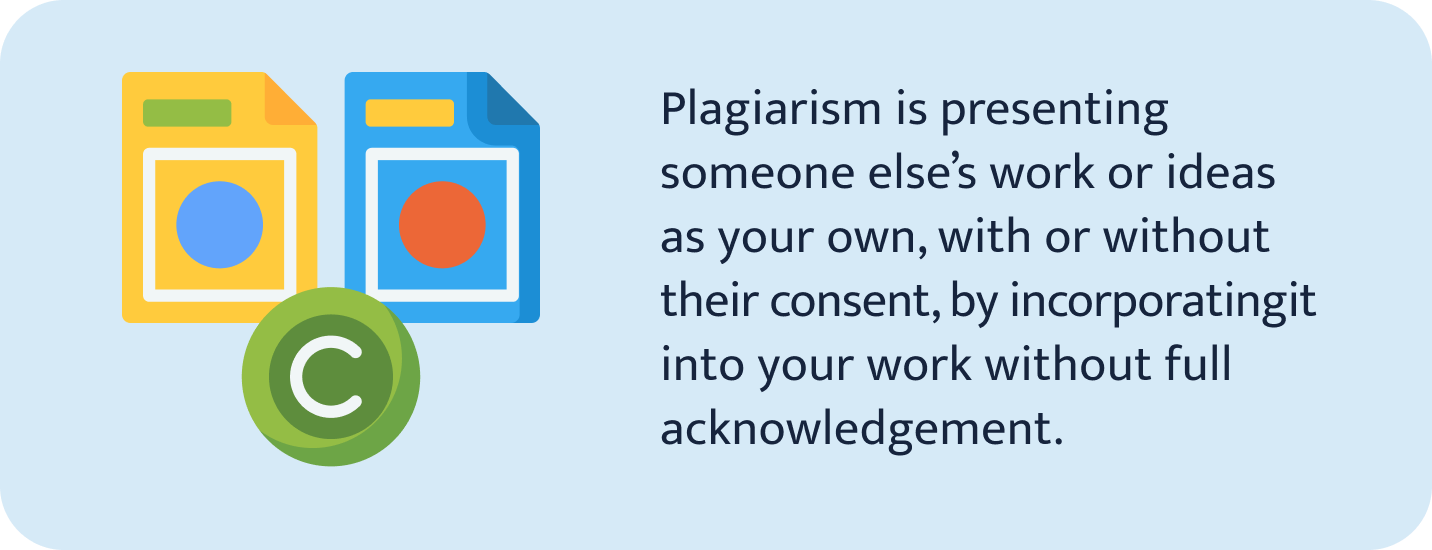
If you wish to learn more, you can check out our guide on how to write a literary analysis.
Best Tips for Writing a Literary Analysis
There are many things to keep in mind when writing about literature. But there’s no need to worry: we are here to help you. Here are the four components that will help to make sure you get an excellent grade on your essay:
- Make sure you refer to the literature you write about in the proper format. For example, the titles of plays and full-length books should be italicized, while poems and short stories should be in quotation marks. You may consult Purdue University’s excellent citation guides to be on the safe side.
- Ensure that the quotes are properly attributed with the correct page numbers.
- Avoid directly quoting or borrowing arguments from previously published literary analysis samples. Using the same forms of argument and language is a form of plagiarism.
- Remember that you need a brief introduction with a clear thesis statement, distinct body paragraphs, and a cohesive conclusion. If you find it hard to write concisely, feel free to use our essay shortener to save time.
📃 Literary Analysis Example for Free
Looking for a fully-formatted literary analysis example? Look no further! Download our excellent sample in PDF format below.
Example:
The Little Match Girl is a short story by Hans Christian Andersen. It’s a touching tale about a poor girl who spends New Year’s Eve working on the streets, dreaming of a better life, and warming herself by lighting matches she failed to sell. Some of the main themes include loneliness, struggle, and cruelty.
We hope that you found some inspiration to take your essay on the next level. Let us know what literary studies topic you like the most and other literary analysis ideas you have!
❓ Literary Analysis Essay FAQs
If you’re writing a literary analysis, make sure you don’t summarize the text you are analyzing. Instead, focus on your thesis and the supporting evidence. You should also avoid using phrases such as “in my opinion.”
A literary analysis should always include information on the text’s components. They include plot, setting, themes, motifs, imagery, tone, and character analysis. Don’t forget to write about the way the author uses these elements and how they contribute to the overall work.
The introductory part of your literary analysis should include a thesis statement that conveys the structure of your essay. Don’t forget to mention the author and provide background information about the text. Remember to start your body paragraphs with a topic sentence.
A literary analysis is usually 5-paragraphs long. The introduction and conclusion consist of one paragraph each, while the main body has three.
A literary analysis is a type of writing assignment containing an analysis of a literary piece. In a literary analysis, you should evaluate and interpret the work by analyzing its plot, setting, motifs, themes, characters, and style.
Further reading:
- Case Study Analysis Example + How-to Guide
- How to Write a Film Analysis Essay
- Short Story Analysis: Step by Step How-to Guide
- How to Write a 5-Paragraph Essay: Outline, Examples, & Writing Steps
- Literature Review Outline: Examples, Approaches, & Templates
🔗 References
- Find a Topic Idea: Questia
- A CS Research Topic Generator: Purdue University
- 50 Critical Analysis Paper Topics: Owlcation
- Variations on a Theme: Common Types of Literary Analysis Papers: UVM Writing Center
- How do I find literary analysis essay topics? Baker Library
- Literary Terms: Purdue O.W.L.
- Literary Terms: Stanford University
- How To Write A Literary Analysis Essay: Bucks College
- Writing Critical Essays about Literature: Gallaudet University
- Literature (Fiction): UNC Writing Center
- Literary criticism: Britannica
- Fiction vs Non-Fiction – English Literature’s Made-Up Divide: The Guardian
- Feminist Literary Criticism: ThoughtCo
- Feminist Criticism: Washington State University
- A Short Guide to Close Reading for Literary Analysis: UW Madison
- William Shakespeare Biography: Shakespeare Birthplace Trust
- William Shakespeare: Poets.org
- Hamlet Topic Overview: Gale
- Macbeth – Themes: BBC
- From Plato to Platonism: Cornell University Press
- Sophocles: World History Encyclopedia
- Charles Dickens, 1812-1870: University Of California
- Heroes and the Homeric Iliad: University of Houston
- Historical Context of Song of Solomon: Columbia College
- The Red Badge of Courage: University of South Florida
- William Blake: University of Delaware
- William Butler Yeats: Yale University
- Chaucer’s Influences: University of Glasgow
- John Keats: King’s College London
- UVA Commemoration Looks at King’s ‘Why We Can’t Wait’ in Light of Today’s Issues: University of Virginia
- Alice Walker: National Museum of African American History & Culture
- Virginia Woolf: University of London
- Harper Lee: Encyclopedia of Alabama
- A Rose for Emily by William Faulkner: Baruch College
- Death of a Salesman and Death of a Salesman: The Swollen Legacy of Arthur Miller: Columbia University
- Mary Shelley’s Frankenstein: The Ohio State University
- Themes In Wuthering Heights: Brooklyn College
- The Metamorphosis: Grossman School of Medicine
- Gothic and the Female Voice: Examining Charlotte Perkins Gilman’s “The Yellow Wallpaper”: Yale-New Haven Teachers Institute
- The Literature Review: University of Southern California
- Cicero (106—43 BCE): Internet Encyclopedia of Philosophy
- Analyzing Novels & Short Stories: TAMU Writing Center
- Literature Analysis: PLU Writing Center
- What Is Analysis?: Austin Community College
- Writing Your Literary Analysis: University of Hawaii
- Literary Analysis Paper: Western Michigan University
![A List of Research Topics: 715 Interesting, Unique, & Fun Ideas [2025]](https://custom-writing.org/blog/wp-content/uploads/2021/01/Fotolia_141866189_S-284x153.jpg)
![335 Unique Essay Topics for College Students [2025 Update]](https://custom-writing.org/blog/wp-content/uploads/2021/01/smiling-students-walking-after-lessons1-284x153.jpg)






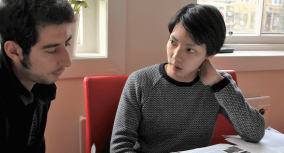



Thank you so much! That gave me a great start!